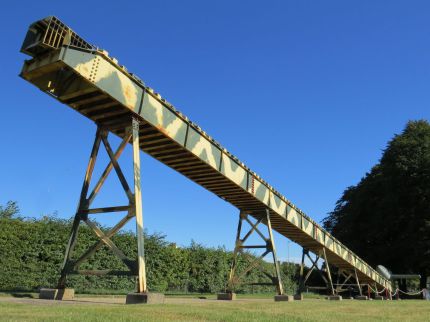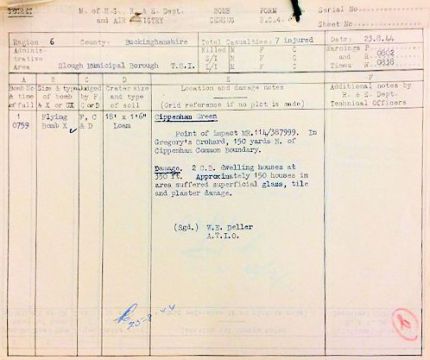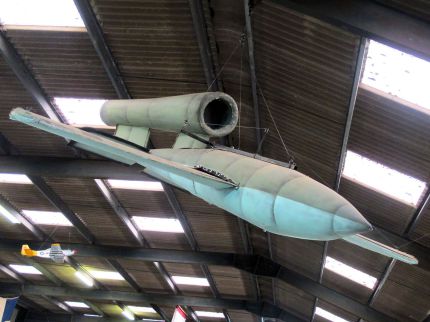
Slough World War Two
During the Second World War Slough was considered to be a relatively safe place to live and was a destination for many evacuees from London. Something like 8,000 children arrived in Slough (which at the time included Eton, Eton Wick and Datchet) and Windsor. Pregnant women were also evacuated to the area.
As young men enlisted or were called up, women were increasingly employed in factories in Slough for essential war work. Some worked in the surrounding countryside farms to help produce foodstuffs, vital to the war effort.
The government began an initiative to recycle metals and appealed to the whole nation to donate any pots and pans and other metallic objects to the war effort. To show they meant business the railings around Hyde Park in London were famously sacrificed as were those of Salt Hill in Slough.
This sacrificial gesture was utterly pointless because railings are made of cast iron which cannot easily be recycled. It is rumoured that they were dumped in the Thames Estuary possibly along with the railings of other parks such as Hyde Park in London. It seems that this may have been a morale boost; a way of making the population think that they were doing their bit towards the war effort.
Almost all of the factories on Slough Trading Estate were employed in war work especially in the production of components for fighter aircraft and also for bombs. Mars Confectionery however, continued to produce the famous Mars bar although some of their workers were reassigned for more serious war work with other companies.
Hawker Aircraft at Langley
In Langley, Hawker Aircraft produced the Hurricane fighter aircraft which served the country well in almost every theatre or war including the Battle of Britain. Around 10,000 were produced at Langley with well over 4,000 built by other companies such as Gloster; Canadian Car and Foundry; and the Austin car company. To go to the Hurricane page from here click on the button below.
The Typhoon fighter bomber was developed at Langley and fifteen of these aircraft were built there but the majority of production was sub-contracted to Gloster. It was another important aircraft especially on D-Day and beyond where it was used with devastating effect to attack German armour and other ground targets. It was a key weapon operating from forward bases as the allies advanced through Northern France and the Low Countries giving the Nazis a taste of their own Blitzkrieg medicine.
To learn more about Hawker Aircraft and Langley Airfield click on the aircraft symbol below:
The Typhoon led to the development of the Tempest which was one of the finest fighters produced by either side during the war. One of the tasks that the pilots of this aircraft were given was to chase and destroy V1 flying bombs over south-east England.
Another important wartime development came from Datchet, which was part of Slough at the time, was radar, its name being the acronym for RAdio Detection And Ranging. Much of the early work was done at the Radio Research Station at Ditton Park, Datchet which was part of Slough at the time. Subsequent boundary changes mean that Datchet now lies within the Windsor and Maidenhead unitary authority.
Bombs on Slough
Compared to other towns and cities around the country and considering the war work going on here, Slough did not suffer quite as much attention from German forces as it could have done. Some 60 bombs fell in the wards that now form modern Slough. Only five fell on the trading estate, none on Langley Airfield and none on Ditton Park.
Some 270 people in Slough were killed in the town during the conflict. Their names are commemorated in the Book of Remembrance at the Town Hall.
Cippenham V-1 Flying bomb
On 23 August 1944 a V-1 flying bomb, which were nicknamed Doodlebugs by civilians, fell out of the sky and exploded near the junction of Lower Cippenham Lane and Elmshott Lane close to the boundary of the village green. These deadly cruise missiles carried a warhead of 850kg Amatol 39.
Fiesler Fi 103 V-1 Flying Bomb
An impression of a flying bomb of the type that came down in Cippenham Green.
V-1s had a set amount of fuel and when they ran out they would free-fall to the ground. Some were set to explode above the ground but if that failed they would explode on impact. They were devastating but also caused terror as their Argus Pulsejets produced a unique and distinctive sound likened by some to a motorbike exhaust under water. It was when the noise stopped that was most terrifying as everyone knew it was about to fall.
A replica V-1 Flying Bomb (extreme bottom right) on an original launch ramp on display at Duxford Museum
The V-1 impacted in Gregory’s Orchard, north of The Green. The explosion left a crater of about 18ft wide by 1ft deep. Seven people were injured but there were no fatalities. Surrounding houses suffered some broken windows and tiles as well as some superficial damage to wall surface rendering.
For a V-1 to have travelled so far out of range of London was rare. If it happened it was usually north or south due to range/fuel miscalculations, not east or west. It may have drifted off course due to weather conditions. About a month after the Cippenham V-1 the threat was removed when allied forces overran their launch sites on the French coast.
Form Bomb Census 4 records the Cippenham V1
The Bomb Census 4 form was completed by the ARP (Air Raid Precautions) organisation for every bombing incident. All BC4s are stored at The National Archives. Along with the description of the location of the point of impact, the BC4 contains also contains a map reference but this does not refer to the grid system used on standard Ordinance Survey maps. Instead, special secret issue maps were used in the war which had a different grid, sometimes called the ‘purple grid’ because it was originally overprinted on Ordnance Survey maps in purple ink.
The nearest V-1 Flying Bomb to Cippenham is on display at the History on Wheels Museum in Eton Wick
Paul Nash
1889-1946
Author’s note: although much of Paul Nash’s work was in the First World War, he did a lot of work in the Second World War so I have placed his article in this section in order to distinguish him from his brother John.
Born in Kensington, London on 11 May 1889, Paul Nash was a surrealist painter, war artist, photographer and writer. He was the older brother of artist John Nash. Their father was lawyer William Harry Nash and their mother was Caroline who sadly suffered mental illness. The family moved to Iver Heath in Buckinghamshire in 1902. Caroline died in an asylum in 1910.
Nash spent a year studying at the South-Western Polytechnic in Chelsea. He followed this in 1908 with two years at the London County Council School of Photo-engraving and Lithography, Bolt Court off Fleet Street where he also began to write poetry.
Nash then enrolled at the Slade School of Art in 1910. His fellow students included Ben Nicholson, Stanley Spencer, Mark Gertler, William Roberts, Dora Carrington, Christopher RW Nevinson and Edward Wadsworth.
He found figure drawing quite difficult but he discovered an interest in painting landscapes. He found much inspiration in ancient historic landscapes such as burial mounds, Iron Age hill forts particularly Wittenham Clumps and the standing stones at Avebury in Wiltshire.
World War One
At the beginning of World War One, Nash enlisted as a private for home service in the Second Battalion, the Artists' Rifles of the 28th London Regiment of Territorials. Nash's duties included guard duty at the Tower of London. In December 1914 Nash married Margaret Theodesia Odeh, an Oxford-educated campaigner for Women's Suffrage, at St Martin-in-the-Fields, Trafalgar Square. The couple had no children.
In August 1916, Nash began officer training and attained the rank of second lieutenant. He was posted to the Western Front with the Hampshire Regiment and based at St. Eloi on the Ypres Salient. On the night of 25 May 1917, Nash fell into a trench, broke a rib. He was invalided back to London by June. A few days later the majority of his former unit were killed in an assault on a position known as Hill 60. Nash considered himself lucky to be alive.
During his recuperation, Nash worked on sketches that he had made at the Front and created some twenty pieces in ink, chalk and watercolours. The collection was exhibited at the Goupil Gallery in June and Birmingham in September.
As a result of these exhibitions, He was advised to approach Charles Masterman, head of the government's War Propaganda Bureau, to apply to become an official war artist. He received word that his commission as a war artist had been approved just as he was preparing to leave or France in a combat role.
The emotions that Nash felt from witnessing these scene drove him into a creative frenzy and led him to produce up to a dozen drawings every day. He took risks and put up with hardships in pursuit of his work. He returned to England on 7 December 1917.
The emotions that Nash felt from witnessing these scene drove him into a creative frenzy and led him to produce up to a dozen drawings every day. He took risks and put up with hardships in pursuit of his work. He returned to England on 7 December 1917.
Between the Wars
During the six weeks spent on the Western Front, Nash had made some fifty sketches and on his return to England he began to develop these drawings into finished pieces. The sketches from Flanders were in ink and he would use watercolours to finish the sketches. He also used lithography but now he also began to use oils as well.
In April 1918 while working on his Void of War exhibition, Nash was commissioned, by the British War Memorials Committee to paint a battlefield scene for the Hall of Remembrance project. He chose to depict a section of the Ypres Salient known as 'Tower Hamlets' that had been devastated during the Battle of the Menin Road Ridge. The huge canvas was almost 60 square feet and became known as The Menin Road (1919).
The Menin Road, 1919
The painting depicts a maze of flooded trenches and shell craters while tree stumps, devoid of any foliage, point towards a sky full of clouds and plumes of smoke bisected by shafts of sunlight. Two soldiers at the centre of the picture attempting to follow the now unrecognisable road appear to be trapped by the landscape.
Nash struggled through the inter-war years with bouts of depression and money worries. At one point he collapsed and had a period of about a week of repeatedly losing consciousness. He was diagnosed as suffering from ‘emotional shock’ brought about by his war experiences.
To recuperate the Nashes moved to Dymchurch in Kent He began painting floral still-life pictures and continued with landscapes such as Chilterns under Snow 1923. He spent some time teaching at the Design School at the Royal College of Art, where his students included both Eric Ravilious and Edward Bawden.
In 1924 Nash held a commercially successful exhibition at the Leicester Galleries and this meant that the Nashes could spend the 1925 winter near Nice. Afterwards they moved home to Iden near Rye in Sussex. The area became the settings for a series of paintings such as Winter Sea (1925, reworked 1937). In 1928 he held another successful exhibition at the Leicester Galleries. This exhibition showed Nash developing more abstraction in his work.
Nash illustrated a couple of Sir Thomas Browne books, Hydriotaphia, Urn Burial and The Garden of Cyrus. Nash held a commercially successful exhibition at the Leicester Galleries and this meant that the Nashes could spend the 1925 winter near Nice. Afterwards they moved home to Iden near Rye in Sussex. The area became the settings for a series of paintings such as Winter Sea (1925, reworked 1937). In 1928 he held another successful exhibition at the Leicester Galleries. This exhibition showed Nash exploring abstraction in his work. In July 1933 Nash went to Marlborough on holiday and visited Silbury Hill and Avebury. Nash painted the landscape at Avebury several times especially Druid Landscape and Landscape of the Megaliths both painted in 1934.
The Nashes went on a trip to France, Gibraltar and North Africa. They returned to England in 1934 and rented a cottage near Swanage hoping that the sea air would be good for his asthma. Nash wrote a Shell Guide to Dorset (1935) producing many paintings and photographs for the book. Whilst in Swanage Nash met artist Eileen Agar and they began a relationship which lasted some years. Nash paintings at this time included Events on the Downs and Landscape from a Dream.
World War Two
At the beginning of the Second World War, Nash was appointed by the War Artists’ Advisory Committee (WAAC) as a war artist attached to the Royal Air Force and the Air Ministry. The Air Ministry representative wanted the war artists concentrate on producing portraits of aircrew. Nash preferred to produce watercolours of crashed German aircraft set in English landscapes such as Bomber in the Corn, The Messerschmitt in Windsor Great Park and Under the Cliff.
The Battle of Britain, 1941
In this picture, regimented formations of Luftwaffe aircraft are approaching from the top right. They are being broken up by RAF fighter planes in a swirl of contrails. The painting attempts to summarise the Battle of Britain as a whole in one ambitious image.
Nash died in his sleep of heart failure, as a result of his long-term asthma, on 11 July 1946, at Boscombe, which was in Hampshire but now part of Dorset. He was buried on 17 July, in the churchyard of St Mary the Virgin, Langley which was in Buckinghamshire but now part of the Slough Unitary Authority. The Egyptian stone carving of a hawk, which Nash had painted in Landscape from a Dream, was placed on his grave.
Totes Meer, 1941
Nash based the image on photographs he took at a dump of wrecked aircraft at Cowley in Oxfordshire.
The Poppy Appeal
To learn more about the Poppy Appeal, buy products of remembrance or to make a donation that generate funds for the good work of The British Legion please visit:
My name is Gary Flint. I'm author, photographer & illustrator for Postcards from Slough. If you wish to make any comments on the contents of the website please click on the ladybird below:
Gary Flint
08/03/1961 - 09/04/2019
Postcards from Slough is an independently funded website. We are open to offers of sponsorship from companies that have any connections to the town. To contact us please click on the ladybird below:
Chalvey Community Forum
Postcards from Slough is linked with a local action group the Chalvey Community Forum. The group liaises with various local organisations in order to improve the quality of life for residents in the ward of Chalvey and Salt Hill. To learn more please click on the maidenhair leaf below:
Museum of Berkshire Aviation
I volunteer as a guide at the Museum of Berkshire Aviation. It is a special museum and if you would like to know more about the museum then please click on the motif below:
To learn more about the museums activities while staying within this website click on the tab at the top of the page or on the motif below:
Graces Guide
Postcards from Slough uses some images from Grace's Guide. Click on the button below:
British Listed Buildings
Postcards from Slough contributes material to British Listed Buildings and uses the site for cross referencing purposes. Click on the button below:








